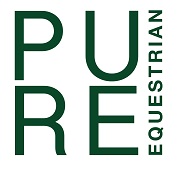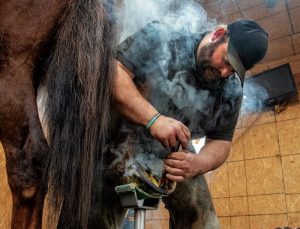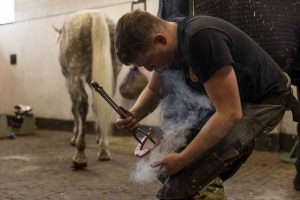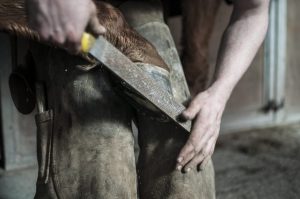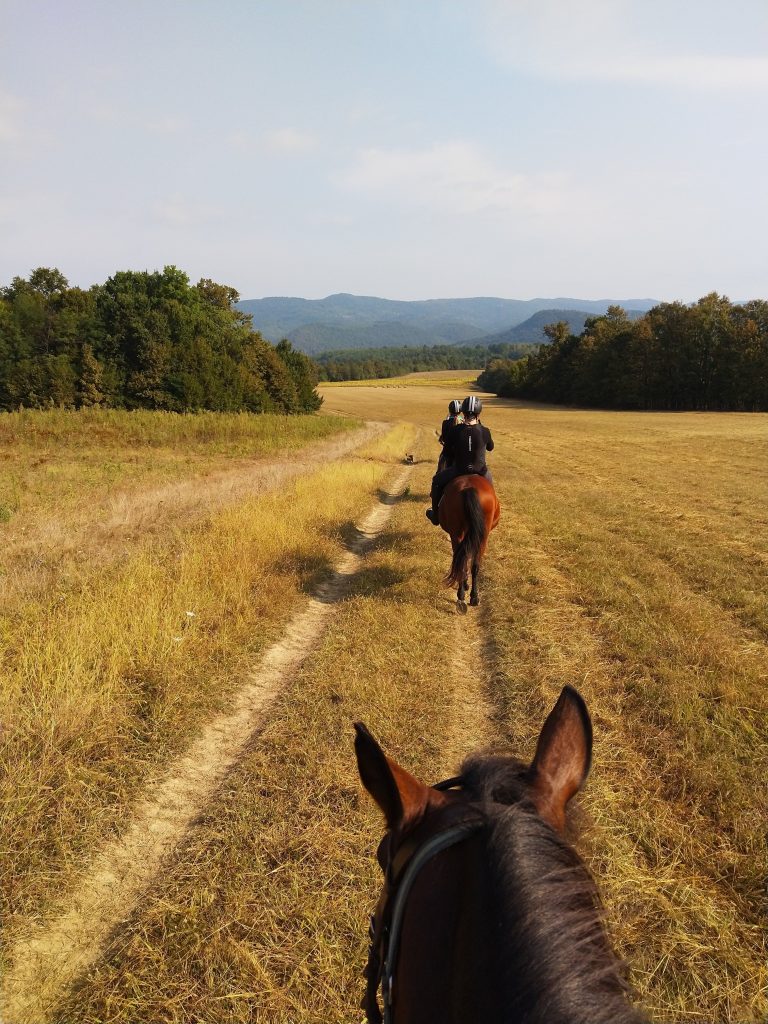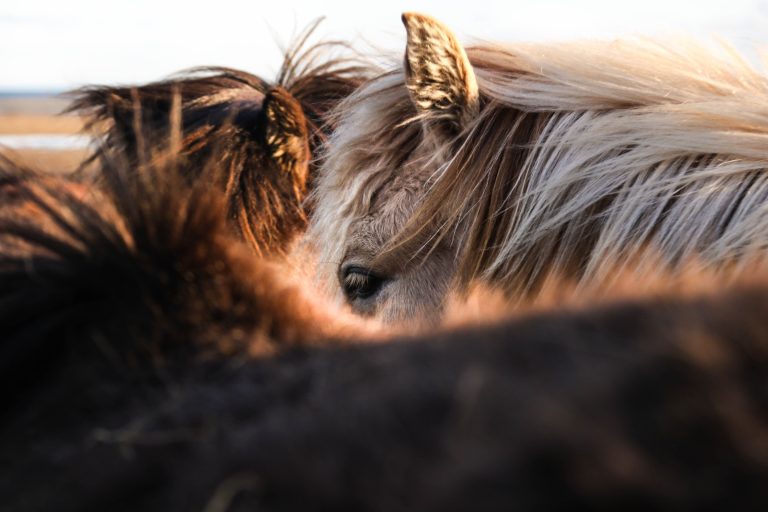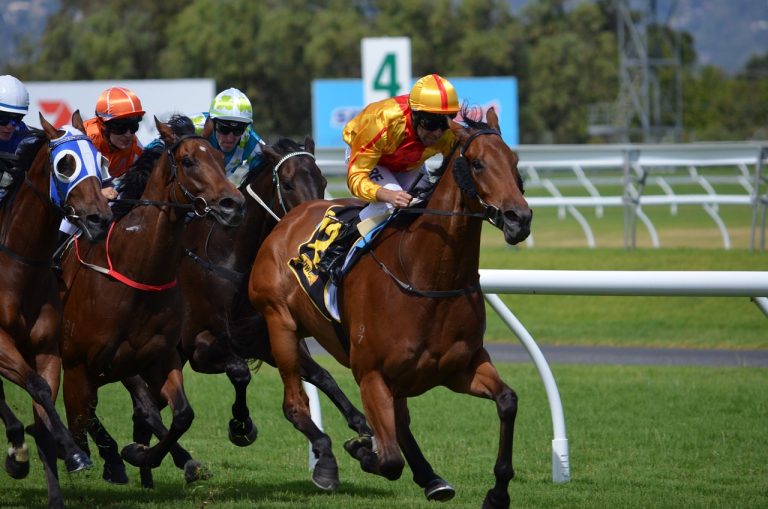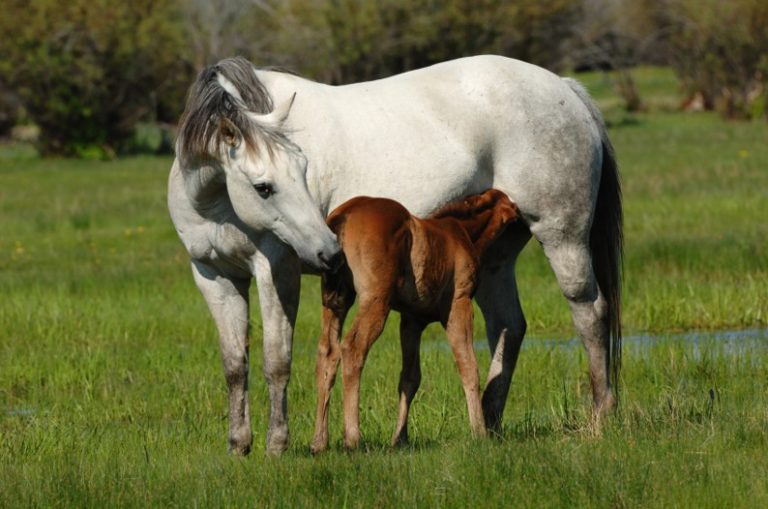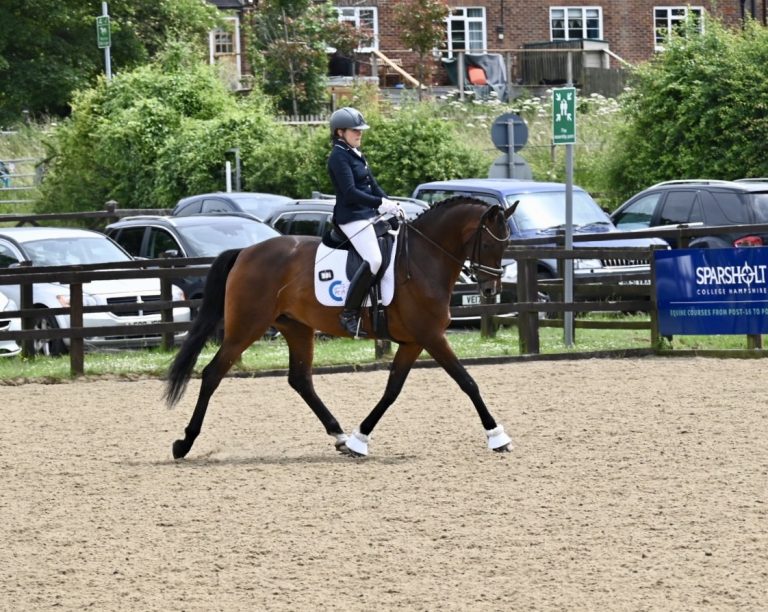Have you ever wondered what role a farrier plays in horse care? A farrier is a trained professional who specialises in the maintenance and care of horses’ hooves. Their main responsibility includes trimming and shoeing horses’ hooves to ensure proper balance, alignment, and overall hoof health. By understanding the significance of a farrier in horse care, you can appreciate the vital role they play in keeping horses healthy and happy.
Table of Contents
ToggleDuties of a farrier
A farrier plays a vital role in the overall care and well-being of horses. They are responsible for several important tasks that contribute to the health and soundness of a horse’s hooves and legs.
Horse hoof trimming
One of the primary duties of a farrier is horse hoof trimming. Regular trimming is essential to maintain proper hoof balance, prevent cracking or splitting, and promote optimal hoof growth. Trimming involves precisely removing excess hoof growth, reshaping the hoof, and addressing any abnormalities or imbalances that may be present.
Horse shoeing
Another crucial responsibility of a farrier is horseshoeing. Applying horseshoes to a horse’s hooves provides protection, support, and traction. Farriers carefully select and fit suitable shoes for each individual horse based on numerous factors such as their discipline, hoof health, and conformation. Shoeing helps to distribute weight evenly, reduce the risk of injuries, and enhance the horse’s performance and comfort.
Corrective shoeing
In addition to regular trimming and shoeing, farriers often provide corrective shoeing services. Corrective shoeing aims to address specific hoof and conformation issues to improve the horse’s gait, balance, and overall soundness. This specialised approach involves the use of different shoeing techniques, such as wedges, pads, or bar shoes, to correct or alleviate problems such as lameness, uneven wear, or imbalances.
Diagnosing and treating hoof problems
A skilled farrier possesses the knowledge and expertise to diagnose and treat a wide range of hoof problems. From common issues like thrush, abscesses, and white line disease to more complex conditions like laminitis or navicular disease, a farrier plays a critical role in identifying and addressing these problems. They work closely with horse owners, veterinarians, and other equine professionals to develop appropriate treatment plans and implement effective hoof care strategies.
Maintaining hoof health
The overall health of a horse’s hooves significantly impacts its overall well-being. A farrier is responsible for providing ongoing hoof care to maintain optimal hoof health. This involves regular assessments, monitoring the condition of the hooves, identifying any potential issues, and implementing preventive measures. Farriers also educate horse owners on proper hoof care practices, such as maintaining a clean and dry environment, regular hoof cleaning, and appropriate nutrition, to support healthy hoof growth.
Qualities of a good farrier
Being a good farrier requires a combination of technical skills, personal qualities, and a deep understanding of horses and their hoof care needs. Here are some essential qualities that contribute to a farrier’s effectiveness:
Knowledge and expertise
A good farrier must have extensive knowledge of equine anatomy, physiology, and biomechanics. They should stay updated on the latest advancements in hoof care techniques, materials, and research. This knowledge enables them to make informed decisions, diagnose hoof problems accurately, and provide effective treatments and shoeing solutions.
Physical fitness
Farriery is physically demanding work that requires strength, agility, and stamina. A good farrier should be physically fit to handle the physical challenges of bending, lifting heavy tools and equipment, and spending long hours on their feet. Physical fitness not only ensures their safety but also allows them to handle horses with confidence and effectively perform their duties.
Patience and calmness
Working with horses requires patience and calmness, especially when handling anxious or uncooperative animals. A good farrier understands the importance of having a calm and gentle approach while working on horses. They maintain composure in challenging situations and use their communication skills to comfort and gain the trust of the horses they work with.
Attention to detail
Farriery is a precise trade that requires exceptional attention to detail. A good farrier pays careful attention to every aspect of their work, from trimming and shaping hooves to fitting and adjusting shoes. They make sure the hoof balance is correct, the shoes are properly aligned, and the overall hoof health is maintained. Attention to detail is crucial to prevent lameness, promote soundness, and improve the horse’s overall comfort and performance.
Good communication skills
Effective communication is essential for a farrier to establish good working relationships with horse owners, veterinarians, and other equine professionals. A good farrier listens attentively to their clients, understands their concerns and needs, and communicates clearly about the treatment plans, progress, and any recommendations. Clear and open communication helps ensure that the horse receives the best care possible and that all parties involved are on the same page.
Tools and equipment used by farriers
Farriers rely on a variety of specialised tools and equipment to perform their duties effectively. Here are some of the essential tools that farriers use:
Hoof nippers
Hoof nippers are one of the most commonly used tools in a farrier’s arsenal. They are used to trim and shape the hoof wall by precisely removing excess growth. Hoof nippers have sharp blades and a long handle, allowing farriers to exert the necessary leverage and control to perform precise trimming.
Hoof knife
A hoof knife is a sharp, curved blade tool used to clean and trim the sole, frog, and bars of the hoof. Farriers use the hoof knife to remove loose or dead tissue, address any infections or abscesses, and ensure optimal hoof health. It requires skill and precision to safely and effectively use a hoof knife.
Rasps
Rasps are essential for smoothing and shaping the hoof after trimming. They have a coarse, abrasive surface that allows farriers to refine the edges, remove any rough spots, and achieve the desired shape and balance. Rasps come in various sizes and are designed for both fine detail work and more substantial material removal.
Anvils
Anvils are heavy, solid metal blocks used in farrier forges to shape and form horseshoes. Farriers use hammers, tongs, and other tools to heat the metal shoe in a forge and then shape it on the anvil. Anvils offer a stable and sturdy surface for shaping and working the hot metal and are an essential piece of equipment in traditional forgework.
Forge and forge tools
A forge is a specialised heating apparatus used by farriers to heat the horseshoes and make them pliable for shaping. The forge uses coal, gas, or electric heat to reach high temperatures. Farriers use different forge tools, such as tongs, hammers, punches, and pritchels, to handle the hot shoes efficiently and manipulate them into the desired form.
Shoeing box
A shoeing box is a portable container or tool caddy that allows farriers to organise and carry their tools to different job sites. Shoe boxes are often customised with compartments and slots to hold various tools securely and provide easy access while working on horses. They help farriers stay organised and ensure that all necessary tools are readily available.
Clinch block
A clinch block is a small, sturdy block used to support the farrier’s hammer and provide a solid surface for clenches to be formed during shoeing. It assists the farrier in driving the nails into the hoof wall and bending the nail ends over to secure the shoe. The clinch block provides stability and control during this critical step of the shoeing process.
Shoeing hammer
A shoeing hammer, also known as a farrier’s hammer or driving hammer, is a specialised tool used to drive and shape horseshoe nails. Farriers use the hammer to secure the shoe to the hoof by driving the nails through the shoe and into the hoof wall. The shoeing hammer has a flat, striking face for driving nails and a rounded or ball-peen end for shaping and spreading the nail head.
Working conditions for farriers
Farriery is a physically and mentally demanding profession that requires farriers to work in various conditions and environments. Here are some factors that influence the working conditions for farriers:
Flexible schedule
Farriers often have flexible schedules that can vary from day to day. They work on different job sites, travelling to clients’ barns or facilities to provide hoof care services. This requires them to adapt their schedule based on the needs of their clients and the number of horses they need to attend to. Farriers may work early mornings, late evenings, and even weekends to accommodate their clients and ensure timely hoof care for the horses.
Physical demands
The nature of the work involved in farriery is physically demanding. Farriers spend a significant amount of time bent over or kneeling, working with horses’ hooves and handling heavy tools and equipment. They need to have good strength, dexterity, and stamina to perform their duties effectively while minimising the risk of repetitive strain injuries. Physical fitness and proper body mechanics are essential to prevent musculoskeletal issues and maintain longevity in the profession.
Working with unpredictable animals
Horses can be unpredictable and occasionally exhibit challenging behaviour during hoof care procedures. Farriers need to have a calm and patient demeanour when working with nervous or anxious horses. They must be able to read the horse’s body language, respond appropriately to their behaviour, and use effective handling techniques to keep both themselves and the horse safe during the process. Developing a trusting and respectful relationship with the horse is vital for successful hoof care procedures.
Potential for injury
Working with horses inherently carries some risk of injury. Farriers must be vigilant about their safety and take proper precautions to minimise the risk of accidents. Horses may kick, bite, or step on the farrier during handling or shoeing, which can lead to injuries. Additionally, handling heavy tools and exposure to heat and sharp objects pose their own risks. Wearing protective gear such as steel-toed boots, gloves, and safety glasses can help mitigate some of these risks and ensure the farrier’s safety.
Importance of regular farrier visits
Regular farrier visits are crucial for the overall health and well-being of horses. Here are several reasons why regular hoof care by a farrier is so important:
Preventing hoof problems
Regular farrier visits help prevent and identify potential hoof problems before they become more severe. Routine trimming and shoeing ensure that the hooves are in proper balance, the shoeing remains intact, and any early signs of issues can be detected. Preventive care allows farriers to address minor issues promptly, preventing them from escalating into more significant problems that may affect the horse’s soundness and performance.
Improving horse performance
Proper hoof care has a direct impact on a horse’s performance. When hooves are appropriately trimmed and balanced, the horse can move more comfortably and efficiently. The correct application of horseshoes provides the necessary support and traction, preventing slips and enhancing the horse’s athletic capabilities. Regular visits from a skilled farrier help optimise the horse’s hoof health, promoting better movement, balance, and overall performance.
Preserving overall health
Horse hooves are susceptible to various conditions and diseases, such as thrush, white line disease, and abscesses. Regular farrier visits ensure that these issues are promptly identified and treated. By maintaining optimal hoof health, a farrier helps prevent discomfort, lameness, and potential complications that can arise from untreated hoof problems. Healthy hooves are essential for a horse’s well-being, as they provide the foundation for overall soundness and a happy, active life.
Detecting potential issues
Farriers are highly trained professionals who have a keen eye for detecting potential problems as they examine and work on horse’s hooves. During regular visits, farriers assess the overall condition of the hooves, looking for signs of abnormalities, uneven wear, or any changes in the horse’s gait or demeanour. Their expertise allows them to identify subtle signs that may indicate underlying issues, enabling early intervention and treatment when necessary.
Collaboration with other equine professionals
A successful and holistic approach to horse care often involves collaboration between different equine professionals. Farriers play a crucial role in working alongside other professionals, such as veterinarians, equine nutritionists, trainers, and riders, to provide comprehensive care for horses.
Working with veterinarians
The collaboration between farriers and veterinarians is essential in addressing the complex health issues of horses. Farriers work closely with veterinarians to develop treatment plans for conditions such as lameness, injuries, or hoof-related diseases. They consult with each other to ensure that the horse receives the most appropriate and effective care, combining their expertise in hoof care and veterinary medicine.
Working with equine nutritionists
Hoof health is closely linked to a horse’s diet and nutrition. Farriers often collaborate with equine nutritionists to ensure that the horse’s nutritional needs are met to support healthy hoof growth. Nutritionists provide guidance on dietary supplements, forage quality, and a balanced diet to optimise hoof health. The collaboration between farriers and nutritionists ensures a holistic approach to horse care and promotes overall well-being.
Working with trainers and riders
Farriers work closely with trainers and riders to understand the specific demands placed on the horse’s hooves during training and competition. They collaborate to ensure that the horse’s hoof care needs align with their training regimen and performance goals. Regular communication between farriers, trainers, and riders allows for adjustments in shoeing or trimming techniques to optimise the horse’s comfort, movement, and performance.
Common hoof problems and their treatment
Hoof problems are relatively common in horses and require prompt attention and treatment. Here are some of the common hoof problems seen in horses and their associated treatments:
Thrush
Thrush is a bacterial infection that affects the frog of the hoof. It is characterised by a foul odour, a black discharge, and a soft, crumbling frog. Treatment typically involves cleaning the hoof thoroughly and applying topical antimicrobial solutions or powders to eliminate the bacteria and support healing. Hoof trimming may be necessary to remove any dead or infected tissue and promote healthy regrowth.
White line disease
White line disease, also known as seedy toe, is a fungal infection that affects the inner layers of the hoof wall. It causes the separation and weakening of the white line, leading to the invasion of bacteria and other pathogens. Treatment often involves removing the diseased portion of the hoof wall, applying antimicrobial treatments to eliminate the infection, and implementing measures to prevent further disease progression, such as improved hoof hygiene and appropriate shoeing techniques.
Laminitis
Laminitis is a painful and potentially debilitating condition that affects the laminae, the sensitive tissues within the hoof. It can occur due to various factors, such as diet, metabolism, or underlying health conditions. Treatment aims to alleviate pain, reduce inflammation, and prevent further damage to the laminae. Treatment approaches may include therapeutic shoeing, dietary management, pain medications, and close collaboration with veterinarians to address the underlying cause.
Abscesses
Hoof abscesses result from bacterial infections within the hoof, causing a buildup of pus and intense pain. Farriers play a crucial role in identifying and actively treating abscesses. Treatment typically involves locating the abscess, creating a drain hole to release the pus, and providing appropriate hoof care to facilitate healing. Farriers may use poultices, soaking methods, or specialised shoeing techniques to promote drainage and alleviate pain.
Navicular disease
Navicular disease is a chronic condition that affects the navicular bone and associated structures in the hoof. It can cause lameness and lead to progressive degeneration if left untreated. Farriers may collaborate with veterinarians to implement a comprehensive treatment plan, which may include therapeutic shoeing with specialised shoe designs to relieve pressure on the affected area, pain management, and exercise programmes tailored to minimise strain on the navicular region.
Farrier’s role in horse rehabilitation
Farriers play a crucial role in the rehabilitation of horses recovering from hoof injuries or related conditions. They work closely with veterinarians and other equine professionals to provide specialised hoof care throughout the rehabilitation process.
Managing hoof injuries
When a horse sustains a hoof injury, farriers are often called upon to assess the extent of the damage and provide suitable treatment. They may need to stabilise and protect the injured area by applying supportive shoes, pads, or other therapeutic devices. Farriers also play a role in monitoring the healing process closely, making adjustments as necessary to promote optimal healing.
Assisting in healing and recovery
Farriers collaborate with veterinarians and other professionals in developing comprehensive treatment plans for horses in rehabilitation. They provide ongoing care, such as regular trimming, shoeing, or specialised shoeing techniques, to support the healing and recovery process. By addressing any imbalances or abnormalities in the hoof structure, farriers play a vital role in helping horses regain their soundness and mobility.
Providing corrective shoeing for rehabilitation
Rehabilitation often involves correcting and managing existing hoof imbalances or abnormalities. Farriers employ specialised corrective shoeing techniques to assist in the recovery process. This may include using wedges, pads, or other therapeutic devices to address specific issues and promote proper hoof alignment and function. Corrective shoeing helps relieve pain, rehabilitate injured structures, and restore the horse’s soundness.
Maintaining professional relationships with clients
Establishing and maintaining strong professional relationships with clients is essential for farriers. Effective communication, understanding their clients’ needs, and providing reliable and timely services contribute to successful and long-lasting relationships.
Effective communication
Clear and open communication is crucial in building trust and understanding between a farrier and their clients. Farriers should actively listen to their clients’ concerns, address any questions or doubts, and provide clear explanations of the treatment plans and procedures involved. Regular communication ensures that both the farrier and the client are on the same page and working towards the best interests of the horse.
Understanding horse owners’ needs
Each horse owner has unique preferences, goals, and expectations regarding their horse’s hoof care. A good farrier takes the time to understand the needs and aspirations of their clients, tailoring their approach accordingly. They consider factors like the horse’s discipline, performance goals, budget, and personal preferences when developing treatment plans. Understanding and respecting the clients’ values and priorities fosters a positive working relationship.
Providing reliable and timely services
Consistency, reliability, and punctuality are important traits that contribute to a successful farrier-client relationship. Horse owners rely on their farrier to provide timely services and to be consistently available. A good farrier strives to schedule appointments promptly, deliver their services efficiently, and maintain professionalism in all aspects of their work. Being reliable and accessible helps build trust and reassurance for clients, knowing that their horse’s hoof care needs are being met.
In conclusion, a farrier’s role in horse care is diverse and encompasses a range of responsibilities. From hoof trimming and shoeing to diagnosing and treating hoof problems, farriers play a vital role in maintaining the overall health and soundness of horses. With their knowledge, expertise, and specialised tools, farriers provide essential hoof care services that contribute to the well-being and performance of horses. By collaborating with other equine professionals and maintaining strong relationships with clients, farriers ensure comprehensive care and support the long-term health and happiness of the horses they work with.
